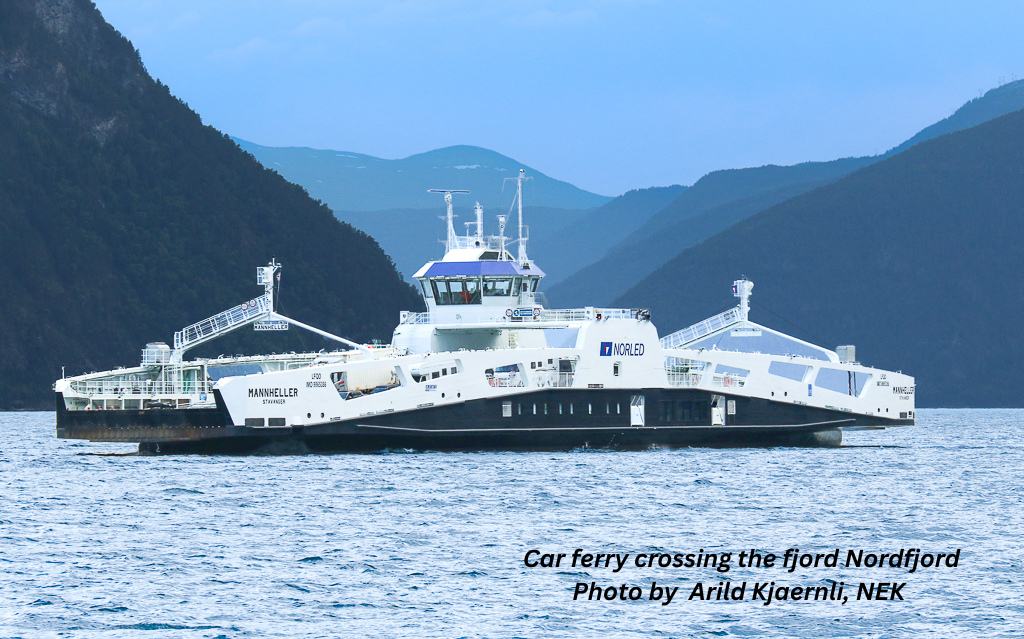Norway is in the midst of a sweeping transformation in how it produces, distributes, and consumes energy. At the heart of this change is a national movement toward a fully electrified society—one where electricity is no longer limited to homes and some industrial applications but is becoming the foundation for transport, aquaculture, and other critical sectors. This evolution is not only central to meeting climate goals but also to fostering energy security, economic resilience, and technological leadership.
This article takes a closer look at Norway’s shifting energy profile, with a particular focus on the electrification of the transport sector. It highlights how the increased use of electricity is reshaping society and underlines the pivotal role that standardization plays in ensuring this transition happens safely and efficiently.
A Longstanding Legacy of Hydropower, Now Entering a New Phase
Electricity has long played a central role in Norway’s energy system, thanks to the country's rich hydropower resources. Since the early 1900s, Norway has established one of the most electricity-intensive infrastructures in Europe. What is new, however, is the way electricity is displacing fossil energy in sectors that, until recently, were seen as hard to decarbonize—particularly transport.
The shift is visible across all modes of transport. Electric cars, ferries, buses, and even short-haul flights are increasingly powered by electricity. Public incentives, consumer adoption, and a robust renewable energy base have positioned Norway as a global leader in this space. This transition goes beyond environmental gains: it also boosts energy efficiency, strengthens industrial innovation, and reduces dependence on volatile global energy markets.
Norway’s Energy Landscape: How Electricity Dominates
As of 2024, Norway’s domestic energy use stands at around 227 terawatt-hours (TWh). Industry consumes the largest share, followed by transport and households. What sets Norway apart is its overwhelming reliance on electricity, which supplies the majority of energy needs across all sectors, thanks largely to hydropower.
Households in Norway consume about 45 TWh annually, a figure that has remained stable despite fluctuations in temperature and electricity prices. Unlike many European nations, where heating still relies heavily on fossil fuels, Norwegian homes are primarily heated using electricity.
In 2024, more than 95% of Norway’s electricity production—totaling 158 TWh—came from renewable sources, primarily hydropower and wind. The country exported a surplus of over 18 TWh, underlining its role as a key supplier of clean electricity to the wider European market.
Transport Electrification: From Niche to Norm
The transportation sector, once dominated by petroleum products, is undergoing a rapid transition. Traditionally accounting for about 54 TWh in energy use, the sector is now seeing a growing share of that demand met by electricity.
In road transport, electric vehicles have made significant headway. By 2024, electric energy accounted for 2.8 TWh (almost 8%) of total road transport energy. While that may seem modest, the growth rate is striking. Electric and plug-in hybrid vehicles now make up a significant portion of the vehicle fleet, with electric cars alone responsible for 29% of total kilometers driven in 2024.
The trend is not limited to cars. Maritime transport is experiencing a quiet revolution, particularly in the ferry segment, where many vessels are now battery-powered. From 2025, all newly commissioned ferries must meet zero-emission standards, with limited exceptions. Railways have long been electric, and cities are increasingly investing in electric buses. Even short-distance aviation is beginning to explore electric propulsion.
This momentum not only lowers emissions but also challenges traditional infrastructure. With greater reliance on electricity comes the need for modern grids, increased capacity, and tighter safety protocols—all areas where technical standards play a crucial role.
What Drives the Shift?
This transition is the result of deliberate policy choices, supported by technological progress and changing consumer habits. Norway has long offered generous incentives for electric vehicle ownership, including tax breaks, toll exemptions, and access to bus lanes. These policies, paired with rising global climate ambitions, have helped drive adoption.
Battery technology has also advanced rapidly. Today’s EVs offer longer ranges and faster charging, while public charging infrastructure continues to improve in both quality and availability.
Consumers are increasingly favouring electric options, not just for environmental reasons but also for cost-effectiveness. Charging an EV is often significantly cheaper than filling up a petrol or diesel tank, and the lower maintenance costs add to the appeal.
Broader Benefits and Emerging Industries
The societal advantages of electrification are substantial. The most immediate is the reduction in greenhouse gas emissions. In fact, road transport emissions were nearly 17% lower in 2024 than a few years earlier, largely due to the switch to electric vehicles.
Electric motors are more efficient than internal combustion engines, meaning overall energy consumption decreases, even as transportation activity remains constant or grows. If all vehicles in Norway were electric, total road transport energy demand could drop to roughly one-third of its current level.
Additionally, Norway’s position as a front-runner in electrification has spurred industrial development. Companies are innovating in areas like electric ferry design, EV infrastructure, and energy management systems, building expertise that is now in demand internationally.
Challenges and the Role of Standards
While the benefits are clear, challenges remain. Grid capacity is under pressure, particularly at the local level, where electricity demand spikes can cause overloads. Solutions such as battery storage, flexible consumption models, and smart grid systems are needed.
Technical standards must evolve in step with new technologies. Without common guidelines and oversight, there is a risk of fragmented infrastructure and safety issues. Standardization bodies are therefore essential—not only to ensure interoperability and safety but also to foster innovation and long-term resilience.
Competency development across all levels of the value chain, from engineers and installers to regulators, is vital to sustain momentum.
Looking Ahead
Norway’s electrification journey is far from over. Heavy transport, industry, and even aviation are next in line for transformation. To stay ahead, the country must continue to invest in infrastructure, local power production, and collaborative international standard-setting.
If Norway maintains its coordinated, forward-looking approach, it will not only meet its climate goals but also strengthen its economy and export leadership in clean technology.
This article was written by Leif Aanensen, the CEO of NEK.




